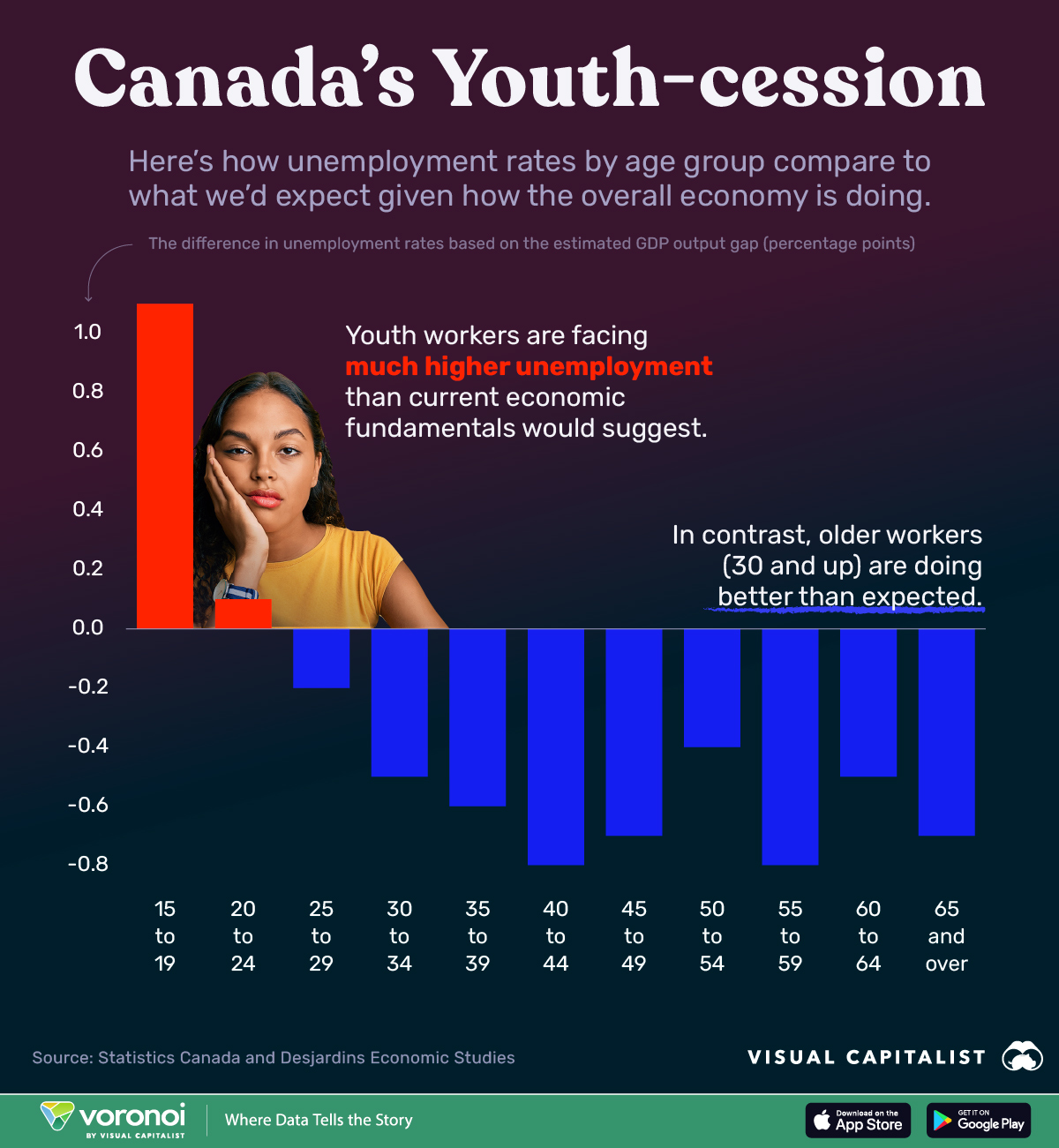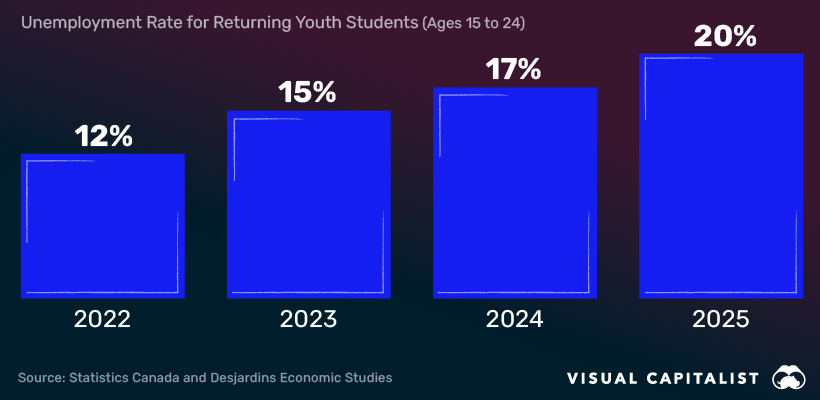![]()
See this visualization first on the Voronoi app.

Use This Visualization
Canada’s Gen Z Workforce Hit Hardest by Economic Uncertainty
This was originally posted on our Voronoi app. Download the app for free on iOS or Android and discover incredible data-driven charts from a variety of trusted sources.
- Teen unemployment in Canada is 1.1 percentage points higher than expected, despite no formal recession since 2020.
- Recent immigration growth, AI disruption, and public sector cuts have uniquely burdened young workers.
- Older workers (30+) are experiencing lower-than-expected unemployment, highlighting an intergenerational divide.
Canada’s overall job market may appear stable on the surface, but a closer look at age-specific data reveals an alarming trend: younger Canadians are facing a labor market significantly more hostile than what economic fundamentals would suggest. According to a recent report from Desjardins, unemployment among teens (ages 15–19) is especially high, exceeding model-based expectations by over 1 percentage point—a gap not seen for any other age group.
Here’s the difference between expected and actual unemployment rates by age group, based on Desjardins’ output gap estimates and Statistics Canada data:
| Age Group | Unemployment Rate Difference (p.p.) |
|---|---|
| 15 to 19 | 1.1 |
| 20 to 24 | 0.1 |
| 25 to 29 | -0.2 |
| 30 to 34 | -0.5 |
| 35 to 39 | -0.6 |
| 40 to 44 | -0.8 |
| 45 to 49 | -0.7 |
| 50 to 54 | -0.4 |
| 55 to 59 | -0.8 |
| 60 to 64 | -0.5 |
| 65 and over | -0.7 |
Notably, all age cohorts above 30 are outperforming expectations, while youth under 25, especially teenagers, are seeing higher-than-expected joblessness. This intergenerational divergence has sparked what some are calling a “youth-cession.”
Why Are Young Workers Struggling More?
Several structural and cyclical factors are contributing to this imbalance. First, youth unemployment is historically more sensitive to economic downturns. However, what makes the current moment unusual is that youth unemployment has been rising steadily since 2022—even though Canada hasn’t experienced a recession since 2020.
Second, population dynamics are playing a major role. The post-pandemic relaxation of work restrictions for non-permanent residents, such as international students, has led to a surge in the 20–24 age group entering the labor force. But demand hasn’t kept pace with supply.
Technology and Sectoral Shifts Are Raising the Bar
Sectors that traditionally employed youth (“mall jobs”, for example) are shrinking their hiring footprints, while others are investing in automation. Younger workers are often the first displaced by these shifts. Additionally, AI disruption is starting to reshape entry-level jobs, further limiting opportunities for those just entering the workforce.
Even seasonal opportunities are drying up: the unemployment rate for returning students in summer 2025 surpassed 20%, the highest non-pandemic level in over 25 years.

Policy Responses May Help, But Are They Enough?
Governments have launched targeted programs like the Youth Employment and Skills Strategy, but youth are still facing high levels of involuntary part-time work and underemployment. Cuts to public sector jobs, once a reliable entry point for young workers, have only added to the challenge.
Learn More on the Voronoi App ![]()
For a broader look at how recent graduates are faring, check out our post on rising unemployment among college graduates.